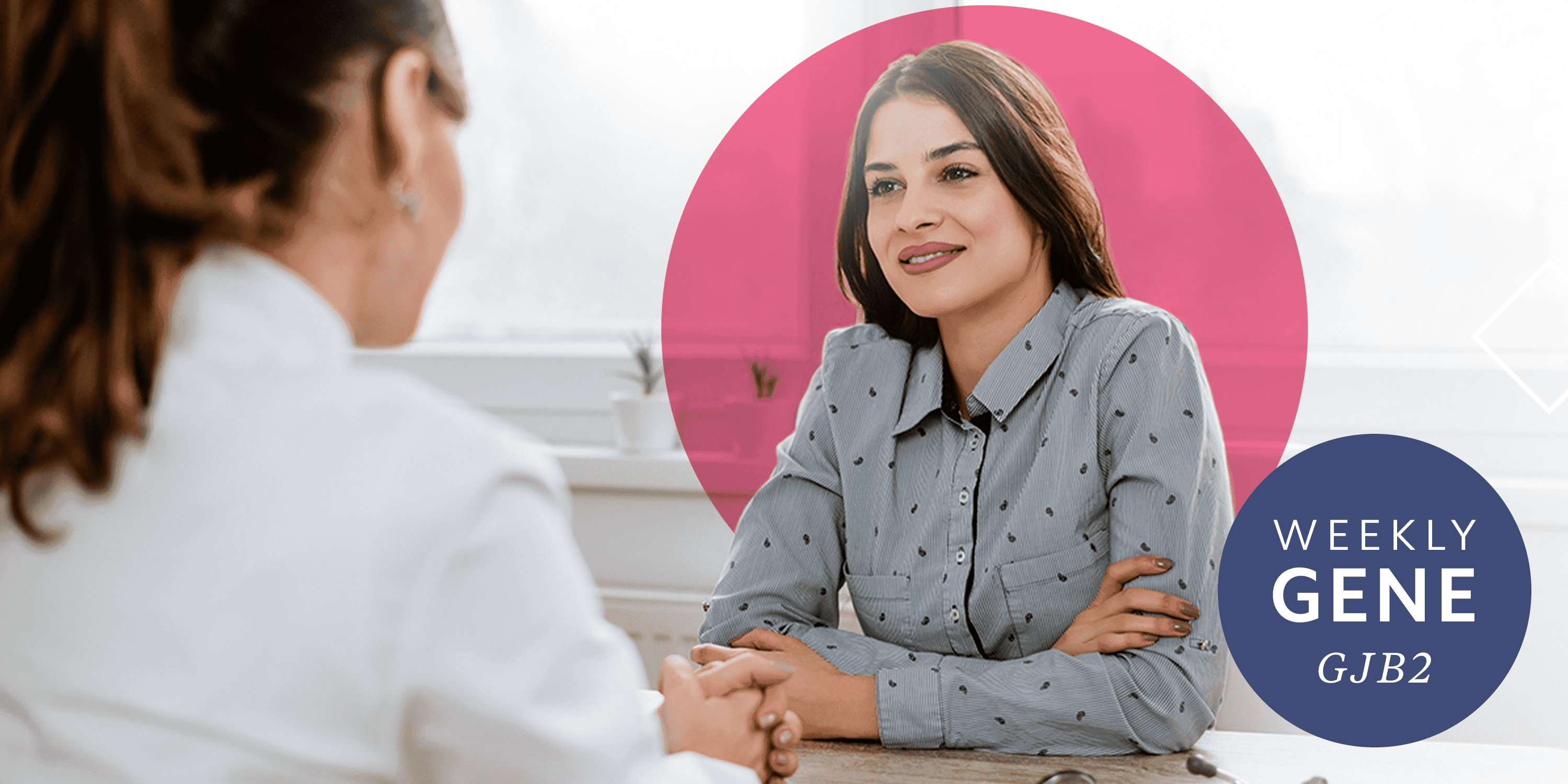Exploring an important link between DNA and hearing loss

Alone, they’re silent—mere waves passing energy between objects. But when these waves are funneled into your inner ear, that energy is transformed into sound.
In essence, communication is pretty simple: all you need is the ability to receive and correctly interpret information. We’ve devised a number of ways to do this. Some people prefer to voice their thoughts while others communicate entirely through GIFs. Humans have likely been communicating through sound for hundreds of millennia, yet it’s only in recent decades that we’ve come to understand how our bodies are able to take sound waves and turn them into a mental perception of sound, and it involves the GJB2 gene.
GJB2 is a gene in our DNA that helps make a protein known as connexin 26. This protein helps to build channels between cells that allow the contents of one cell to flow freely into its neighboring cell1. In a way, these channels are similar to tunnels that connect buildings to one another, allowing people inside those buildings to walk between them without going outside. Channels like this are important for cells throughout our bodies, including the neurons that have to quickly transmit an electrical signal back to the brain.
Hearing loss related to variants in GJB2 is variable
Auditory neurons use GJB2 to make connexin 26 which helps form these important signaling channels, but changes in the GJB2 gene can result in a condition known as GJB2-related hearing loss. Researchers have found that people can inherit many different versions of the GJB2 gene that result in hearing loss. If a person only inherits one version of GJB2 that’s associated with this form of hearing loss, they are considered a carrier and are not likely to lose their hearing. However, when a person inherits two copies associated with hearing loss (one from each parent), they will develop some form of hearing loss, the severity of which can vary from person to person. Though the hearing loss related to variants in GJB2 is variable, people with this condition typically do not have associated health complications (this is why you’ll sometimes see this condition described as “nonsyndromic”.)1-3
This specific type of GJB2-related hearing loss occurs in about 14 out of every 100,000 births2, though many more people are carriers—meaning they’re not affected by this condition, but they do have an increased likelihood of having a child who is. Carrier screening can help you find out if you are one of these people and, by talking with a genetic counselor, you can learn whether future children of yours have an increased likelihood of having GJB2-related hearing loss.
If you’re interested in learning more about GJB2-related hearing loss, Mayo Clinic GeneGuide can help. This educational tool helps you learn about your DNA, other carrier screening conditions, and how your DNA may influence your risk of developing conditions like age-related macular degeneration and malignant hyperthermia. In addition, Mayo Clinic GeneGuide comes with the support of a genetic counselor who can help you understand your results.
- “GJB2 Gene – Genetics Home Reference – NIH.” U.S. National Library of Medicine, National Institutes of Health, ghr.nlm.nih.gov/gene/GJB2.
- Smith, Richard JH. “Nonsyndromic Hearing Loss and Deafness, DFNB1.” Current Neurology and Neuroscience Reports., U.S. National Library of Medicine, 18 Aug. 2016, www.ncbi.nlm.nih.gov/books/NBK1272/.
- “Nonsyndromic Hearing Loss – Genetics Home Reference – NIH.” U.S. National Library of Medicine, National Institutes of Health, ghr.nlm.nih.gov/condition/nonsyndromic-hearing-loss.